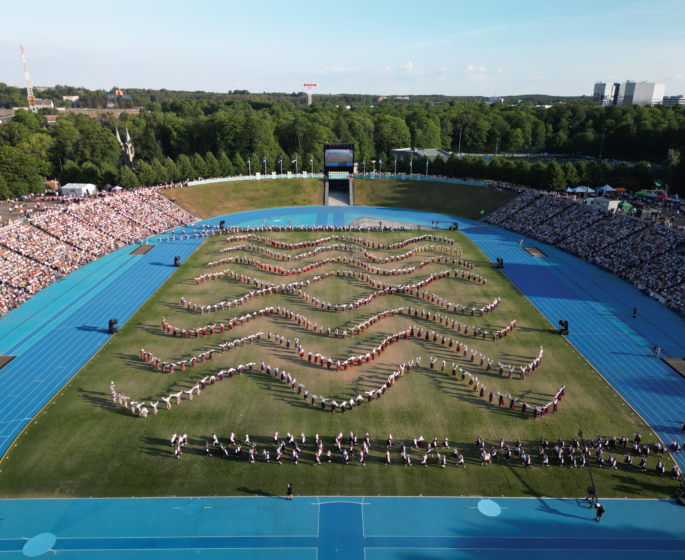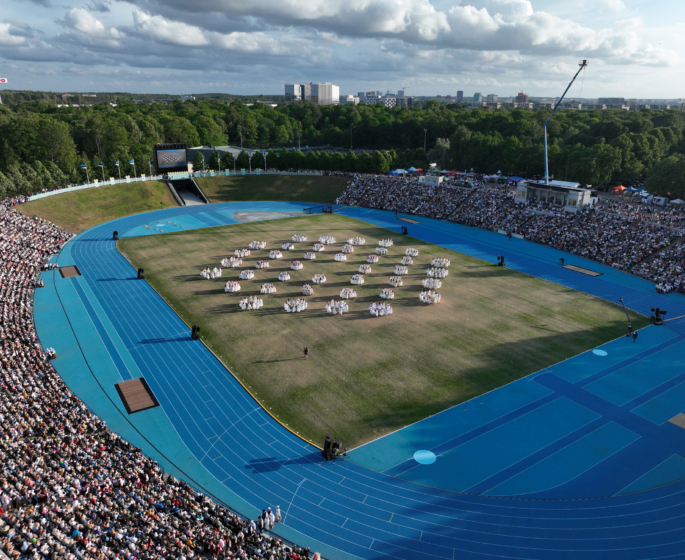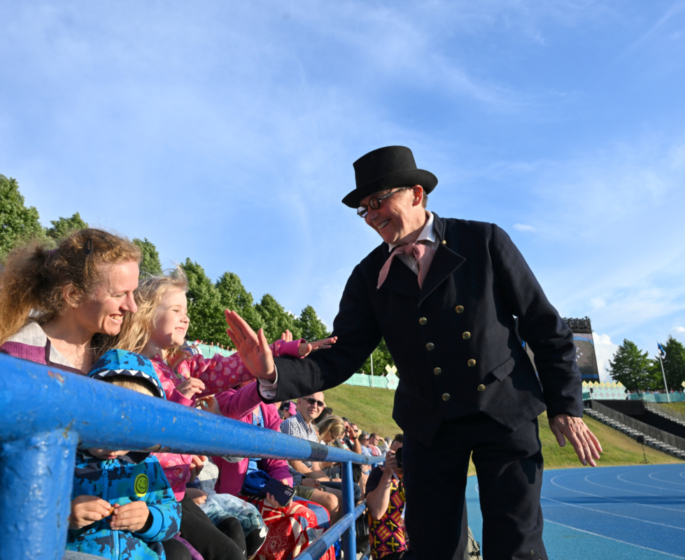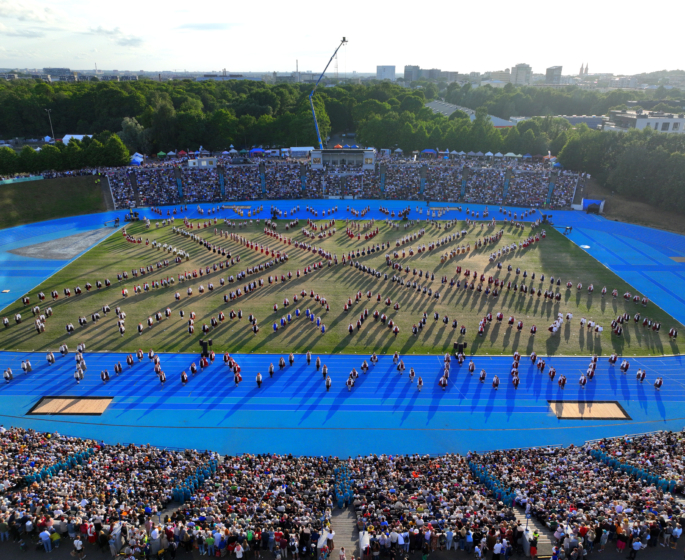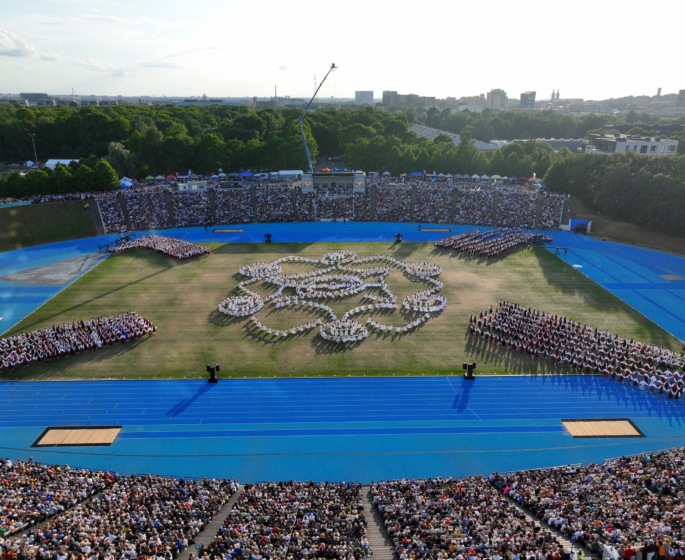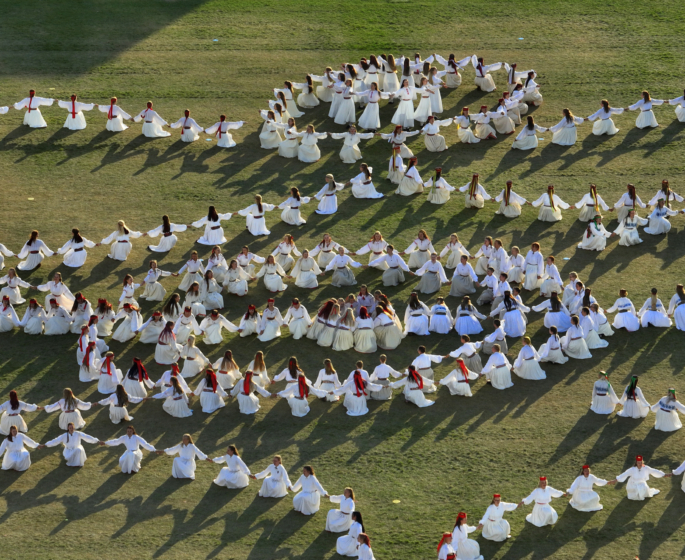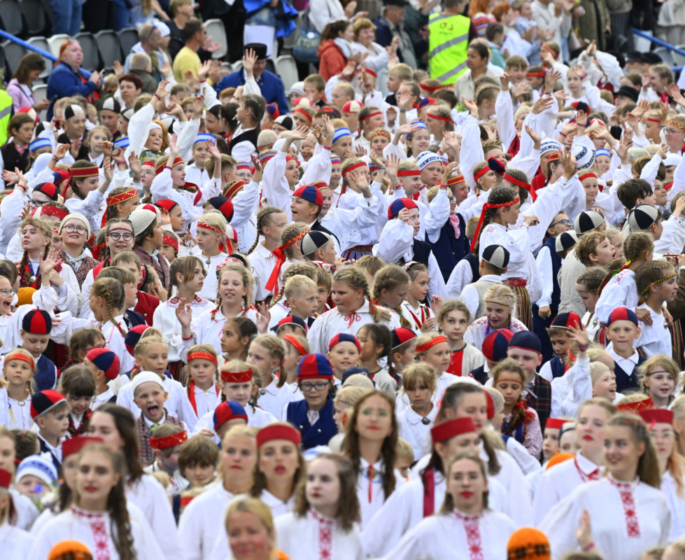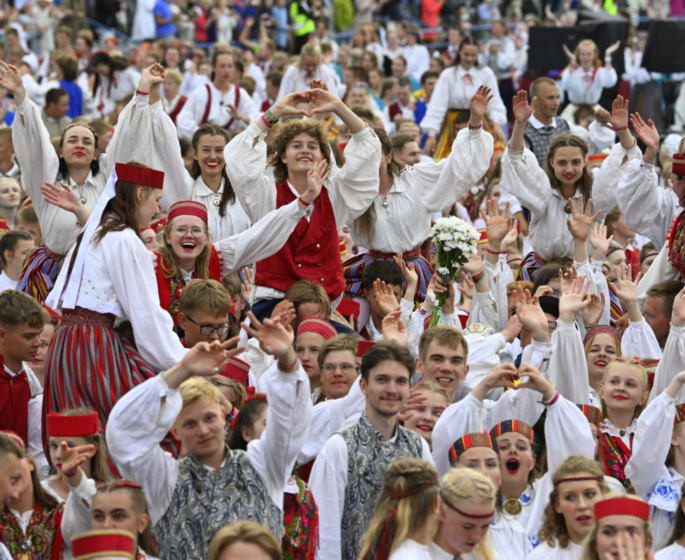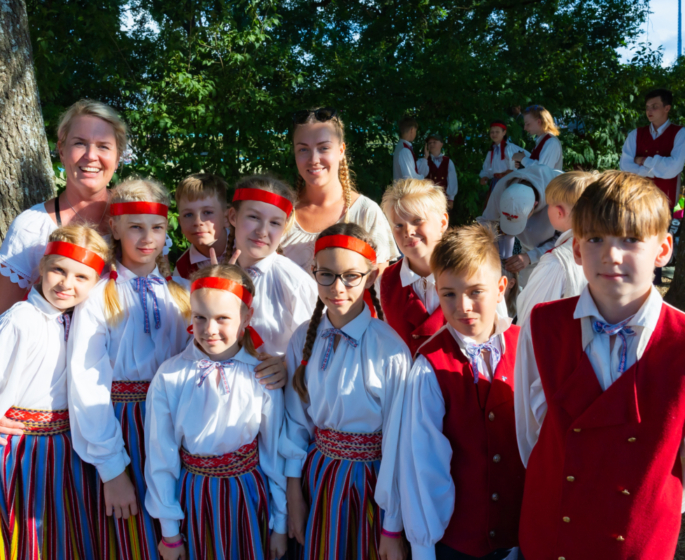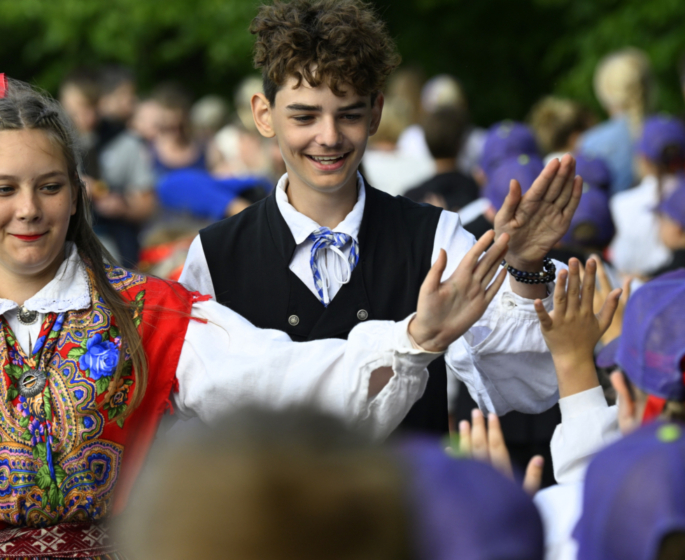History of Dance Festivals
Dancing has been inherent to Estonians since ancient times. However, in the 19th century, dancing did not receive as much attention as singing and instrumental music. It took more time for dance to be considered an art form. Interest in the art of dance increased significantly in the early 20th century, with a significant influence from the established tradition of general song festivals. There were dance performances at the IX general song festival “Ilopüha” in 1928 and in the staged program of the X general song festival “Jaaniõhtu” in 1933. Dance groups participated in these events, establishing a connection between song festivals and dance. The foundation of the general dance festival can be considered the I Estonian Games dance and gymnastics festival held in 1934.
The event featured 1,500 folk dancers. The II general dance festival (II Estonian Games) took place in 1939, with 1,800 participants. The tradition of young dance festivals was interrupted during World War II. The III general dance festival took place in 1947, with 840 participants. In 1950, the next festival was held – this time at the Song Festival Grounds.
The second post-war dance festival already had 1,500 participants. All subsequent general dance festivals have been held at the Kalev Central Stadium. The V general dance festival in 1955 exceeded the threshold of 3,000 dancers, and the number of participants continued to grow with each subsequent festival. The largest general dance festival (IX) took place in 1970, with 10,000 performers. A comprehensive structure of age groups had emerged – dance groups ranged from preschoolers to dance veterans. The youngest dancer at this festival was 4 years old, and the oldest was 76! The festival also featured brass bands, folk music orchestras, and others. There was great interest in the event – 75,000 spectators attended five performances.
Most general dance festivals have been held during the Soviet era. Ideological pressure on dance festivals was significantly weaker compared to song festivals. Since the general dance festival is a comprehensive production and due to the limited capacity of the stadium, 3-5 performances were offered to the audience, and the opening speech could be omitted. The program had to include dances from “fraternal nations” as a compulsory requirement. Dances from Latvia, Lithuania, Russia, Belarus, Moldova, as well as Hungary, Germany, and others were performed, either as suites or separately. Their presentation was more beneficial than harmful. Dance festivals have drawn their content from folk art and have nurtured national sentiment throughout history. Since 1962, youth song and dance festivals have been held in the years between general song festivals.
